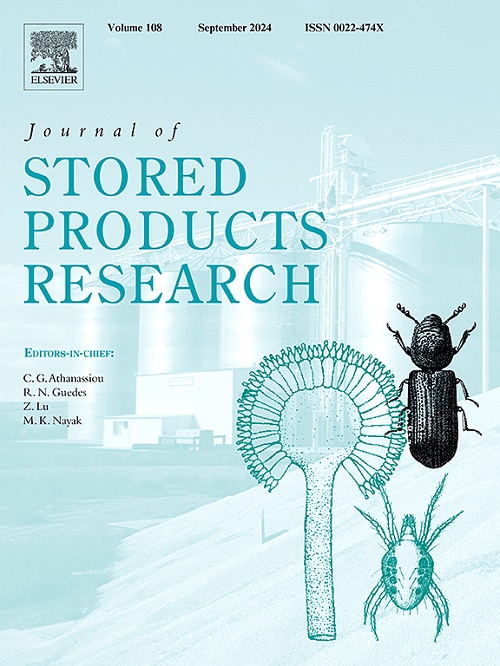Explicit dynamics simulation study to determine the damage patterns of apples (Red Fuji) under impact loading
IF 2.7
2区 农林科学
Q1 ENTOMOLOGY
引用次数: 0
Abstract
Collisions between apples and mechanical structures are inevitable during the harvest of fresh-market fruit. Even moderate impacts can lead to internal damage, significantly affecting the shelf life and quality of the fruit. In recent years, technologies such as spatial frequency domain imaging and structured light reflection imaging have made progress in early damage detection. However, considering both economic feasibility and practical applicability, there remains a need to explore accurate and quantitative methods for damage assessment. To address this issue, this study constructed a 3D model of ‘Red Fuji’ apples through physical experiments and reverse engineering. Explicit dynamic simulations based on the finite element method were conducted to evaluate the mechanical damage under various impact conditions. A total of 125 simulation scenarios were designed by combining five impact heights, five impact angles, and five contact materials. Key data and visual representations of stress evolution were obtained from the simulations. Results indicated that the highest damage susceptibility occurred when apples impacted steel at a height of 20 cm and an angle of 135°, while the lowest damage susceptibility was observed when impacting polyvinyl chloride at a height of 15 cm and an angle of 90°. Furthermore, a response surface methodology was employed to analyze the quantitative values of damage susceptibility. The maximum discrepancies between experimental and simulated results in terms of damage depth, area, and volume were 0.90 cm, 2.94 cm2, and 11.85 cm3, respectively. The prediction error of damage susceptibility ranged from 0.883 to 11.3 %. The consistency of the damage patterns further validates that the finite element model can effectively simulate apple damage under specific impact scenarios. This study provides insights for reducing mechanical damage during harvesting.
对红富士苹果在冲击载荷下的损伤模式进行了显式动力学模拟研究
在收获新鲜水果的过程中,苹果和机械结构之间的碰撞是不可避免的。即使是适度的撞击也会导致内部损伤,严重影响水果的保质期和质量。近年来,空间频域成像和结构光反射成像等技术在早期损伤检测方面取得了进展。然而,考虑到经济可行性和实际适用性,仍然需要探索准确和定量的损害评估方法。为了解决这一问题,本研究通过物理实验和逆向工程构建了“红富士”苹果的三维模型。基于有限元法进行了显式动力学仿真,对不同冲击条件下的机械损伤进行了评估。结合5种冲击高度、5种冲击角度、5种接触材料,设计了125种模拟场景。模拟得到了应力演化的关键数据和可视化表示。结果表明,苹果撞击钢的高度为20 cm,角度为135°时,其损伤敏感性最高,而撞击聚氯乙烯高度为15 cm,角度为90°时,其损伤敏感性最低。在此基础上,采用响应面法分析了损伤敏感性的定量值。实验结果与模拟结果在损伤深度、面积和体积上的最大差异分别为0.90 cm、2.94 cm2和11.85 cm3。损伤敏感性预测误差范围为0.883 ~ 11.3%。损伤模式的一致性进一步验证了有限元模型能够有效模拟苹果在特定冲击场景下的损伤。这项研究为减少收获过程中的机械损伤提供了见解。
本文章由计算机程序翻译,如有差异,请以英文原文为准。
求助全文
约1分钟内获得全文
求助全文
来源期刊
CiteScore
5.70
自引率
18.50%
发文量
112
审稿时长
45 days
期刊介绍:
The Journal of Stored Products Research provides an international medium for the publication of both reviews and original results from laboratory and field studies on the preservation and safety of stored products, notably food stocks, covering storage-related problems from the producer through the supply chain to the consumer. Stored products are characterised by having relatively low moisture content and include raw and semi-processed foods, animal feedstuffs, and a range of other durable items, including materials such as clothing or museum artefacts.

 求助内容:
求助内容: 应助结果提醒方式:
应助结果提醒方式:


